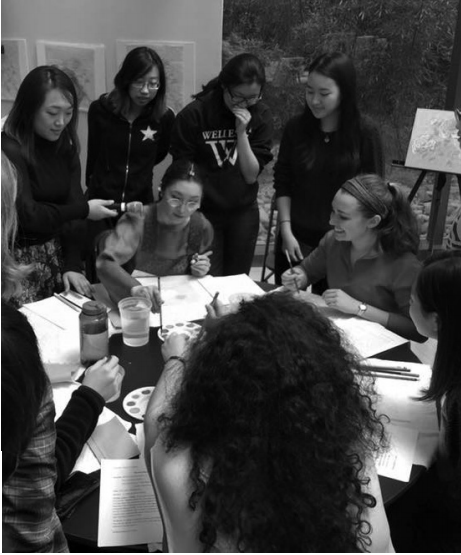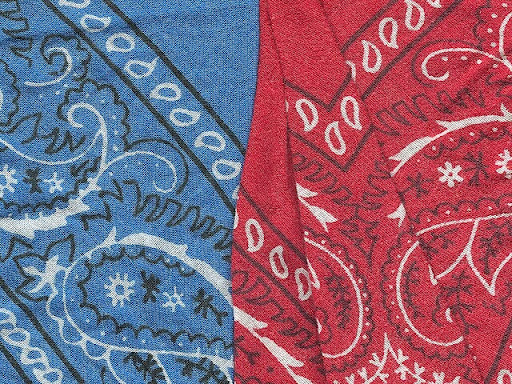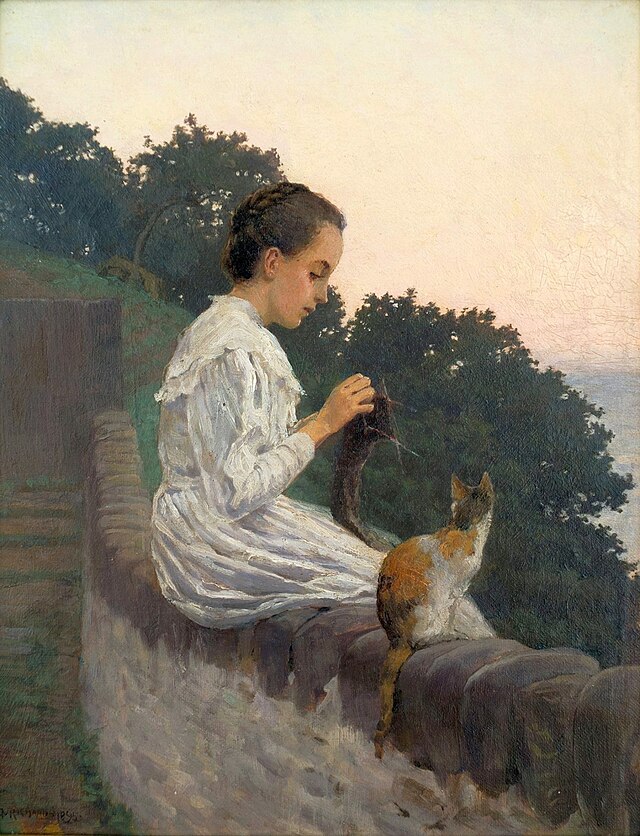Last Friday, on Nov. 20th, the East Asian Languages and Cultures department was filled with students and faculty, celebrating the 10th anniversary of the Korean program at Wellesley. In 2005, Wellesley began offering full four-year Korean language courses, after many years of urging and requests by students, including a sit-in in the President’s office.
Now, the Korean program offers a variety of language courses and seminars, including courses at MIT for interested students, and has its own minor. At the reception a week ago, Professor Sun-Hee Lee enthusiastically proclaimed, “Next step, Korean major!”
The reception was partially a celebration for the Korean program but also a celebration of Korean art and culture in general – the department, in collaboration with the Korean Students Association (KSA), brought Kate Oh Trabulsi, an award-winning Korean-American artist who specializes in Minhwa style painting, among other talents, including Korean dance.
Trabulsi graduated from Parsons The New School for Design in 2000, having done both a BFA and MFA there, and subsequently decided to pursue studies in art history. Beyond her artistic career, she works as a docent at the Metropolitan Museum of Art. She also does not only paint in traditional Minhwa style, as she has gained recognition as a contemporary Minhwa artist, painting traditional subjects in contemporary ways.
Minhwa, as stated on her website, is a “genre of Korean folk art from the late Choseon era, 17th to 19th century. The paintings carry the mythology, religion, and view points of the Korean people and are mainly created for a house decoration purpose while conveying artistic expressions of the unknown artisans. The contents symbolize the feelings of happiness, anger, love, and delight in everyday life and one’s wish for wellbeing.”
Trabulsi hosted her own workshop for Minhwa painting on Saturday, the 21st. Students were invited to come to Tishman Commons and learn how to paint peonies in traditional Minhwa style. We were ushered in, sitting at tables complete with watercolor paint sets and traditional ink brushes, and viewed a video detailing the process of traditional Minhwa painting. We were then given outlined peonies on mulberry paper, with a task to paint each section to emulate the example she provided.
The process was fun and educational, though also long and arduous, which only heightened my respect for the artists who are so talented and dedicated to this art form. Each brush stroke has a specific purpose, and the timing between putting paint on the page and using a different brush to blend is crucial. Watercolors, due to their ability to fade and blend easily, are slightly more forgiving than other paints, but in turn the water-to-paint ratio was very important. Trabulsi went around the room, helping students craft their paintings and walking us through the process.
The entire painting process took around three hours, with breaks for food and demonstrations – it was methodical, and often a quiet hush fell on the room, with everyone deeply concentrated in making sure their peony was worthy of the final stamp and canvas board. Other times we joked around, comparing our peonies with our neighbors’ and looking on in envy at Trabulsi’s beautiful examples hanging around the room.
The workshop was a great success, and the Korean program has truly come such a long way since 1988, when students first asked about Korean language courses at Wellesley. It was a fitting celebration that brought exposure to both the department and Kate Oh Trabulsi. Hopefully we’ll see the department expand even more in the next few years, and more events like this in the near future.




